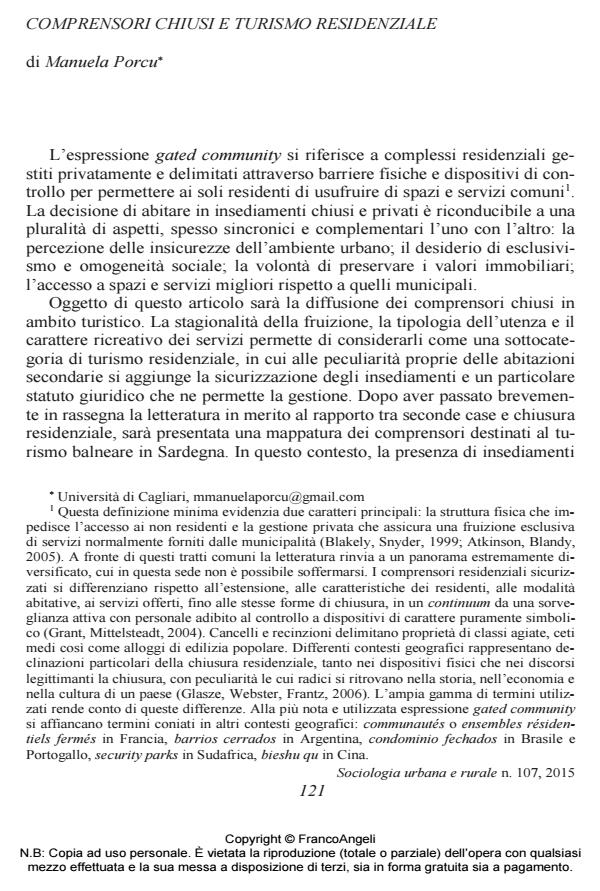Gated Communities and Residential Tourism
Journal title SOCIOLOGIA URBANA E RURALE
Author/s Manuela Porcu
Publishing Year 2015 Issue 2015/107
Language Italian Pages 14 P. 121-134 File size 141 KB
DOI 10.3280/SUR2015-107009
DOI is like a bar code for intellectual property: to have more infomation
click here
Below, you can see the article first page
If you want to buy this article in PDF format, you can do it, following the instructions to buy download credits

FrancoAngeli is member of Publishers International Linking Association, Inc (PILA), a not-for-profit association which run the CrossRef service enabling links to and from online scholarly content.
The residential securitisation is still an unexplored topic in Italy. This article presents the results of a gated communities mapping in Sardinia, realized through the analysis of real estate advertisements and satellite images. In this territorial context the presence of housing developments with the access allowed only to residents is strictly related to the flows of tourism, with critical issues concerning the environmental impact and the use of the land.
Keywords: Critical Discourse Analysis, Gated Communities, Italy, Nature, Privatisation, Residential Tourism
Manuela Porcu, Comprensori chiusi e turismo residenziale in "SOCIOLOGIA URBANA E RURALE" 107/2015, pp 121-134, DOI: 10.3280/SUR2015-107009